A hedge of Rose of Sharon (Hibiscus syriacus) near us used to look absolutely show-stopping in late summer – a time when flowering trees and shrubs are rare, and rarely so generous with their flowers. Tired of being stopped by people asking what it was, the homeowners resorted to posting a sign: It’s called Althea!* Althea is another of this plant’s common names, as is rose mallow. Some, like today’s covergirl, look rosier than others.
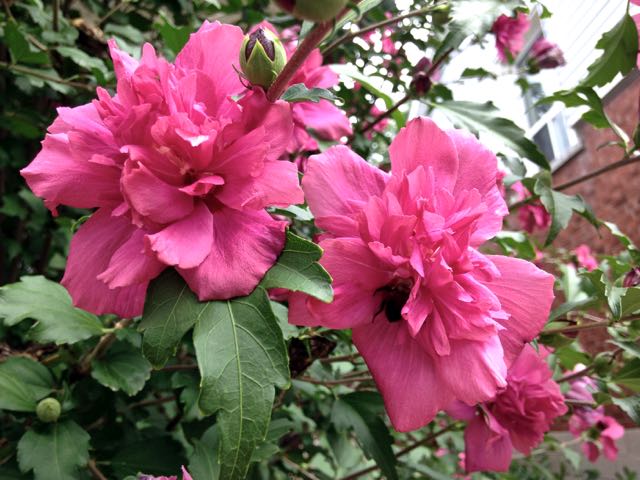
My friend L-A planted our covergirl in her garden 20 years ago. She isn’t sure of the cultivar, but my research suggests it might be ‘Lucy.’ For L-A, it blooms reliably like this for about a month, from early August to September. All she does is trim it a lightly every other spring, “if the branches are close to reaching the eaves of the house.” As she says, very scientific.
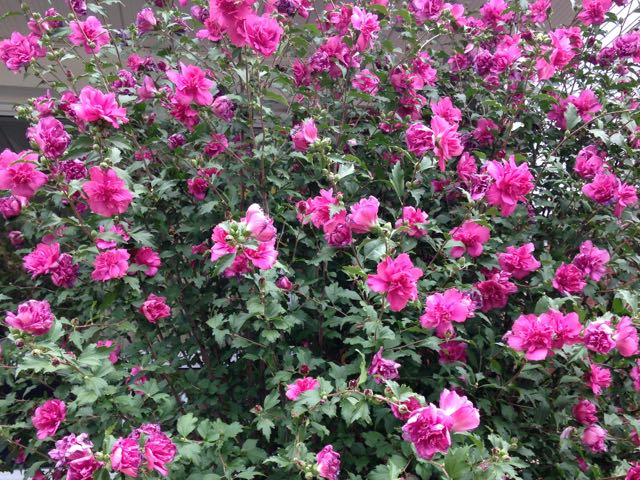
It’s a pretty tough customer, not minding baking sun and dryness. In fact, L-A moved it from one side of the bed to the other just a few years ago, and it came back strong.
I asked L-A if she has problems with it seeding itself around, because Rose of Sharon is a notorious self-seeder. My neighbour M has an increasing number of these trees in his tiny yard, and I’m always pulling out seedlings in mine. L-A hasn’t noticed this particularly.
However, in the U.S., Hibiscus syriacus is on invasive plants watch lists in a number of states. Here, for example, is a map showing early reports of its invasive tendencies. Mind you, it isn’t quite as dire as that state-by-state map appears. This version breaks it down by county, and as far as I can tell when viewed today, each county has only one report.
Ontario’s Invading Species Awareness Program doesn’t have it on their radar. Yet. But it’s good to keep any plant’s wandering tendencies in mind when selecting them for your garden. Unless you really like weeding.
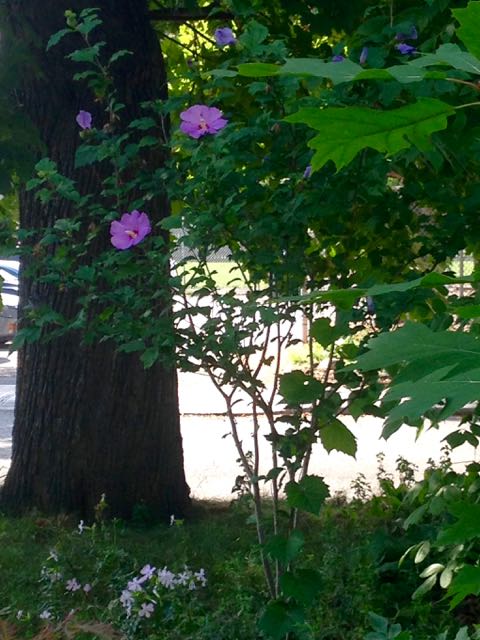
The example above seeded itself into M’s front yard, and clearly isn’t showing any show-stopping qualities. H. syriacus prefers full sun to part-shade. Deep shade doesn’t cut it.
When grown from seed, the flower is variable in colour, and can be white, pink or mauve. The only way to ensure you get the same flower as the parent plant is through cloning via soft-wood cuttings or layering. (To layer, you pin a young lower branch to the earth till it forms roots.)
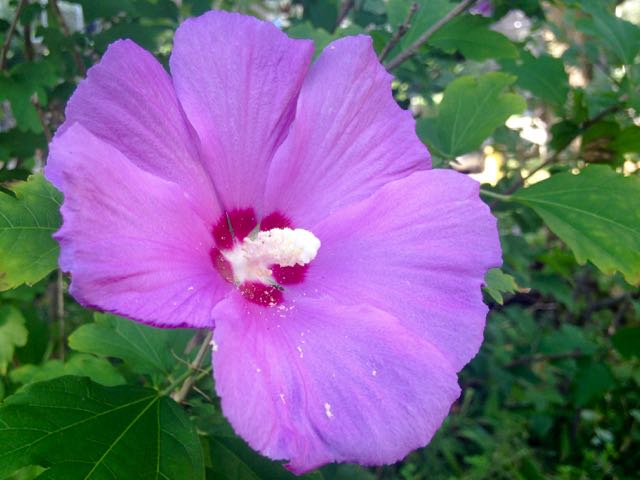
You can see the similarity of the single flower to others in the mallow family (Malvaceae) such as the tropical hibiscus and hollyhocks.
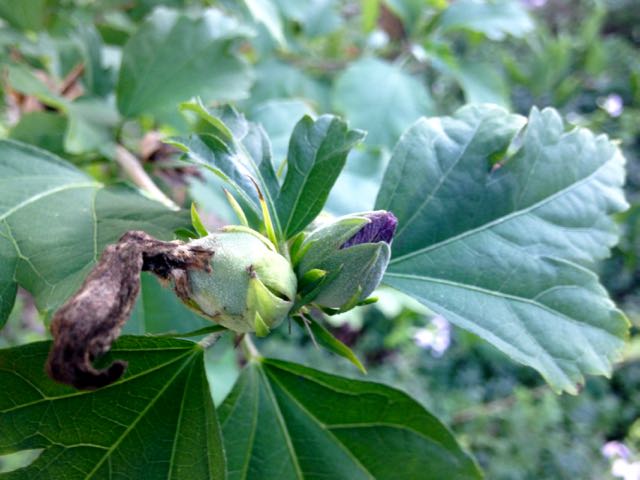
One way to control Rose of Sharon’s wandering ways is to deadhead the seed capsules. On a specimen as floriferous as L-A’s this might be a chore, but so is pulling up a potential forest of seedlings. Each capsule produces many seeds, as you’ll see below, and most are viable.
The capsules dry on the branch, pop open and sprinkle their seeds over winter. The star-shaped dry capsule is an easy way to ID Rose of Sharon when the plant is not in leaf.
Considering I’ve yanked out so many, you’d think I’d have a photo of the seedling, but my flying fingers have been too eager to uproot the demons. The primary leaves are rounded and look slightly frilly. Quite different from the serrated secondaries. In fact, it took me a while to recognize what they were. Here’s a Wiki image for reference.
That said, the U.S. National Arboretum has bred a handful of cultivars that produce “little or no seeds” – they’re not, as some call them, completely sterile. They have names from mythology, such as ‘Diana’, ‘Aphrodite’, ‘Helene’ and ‘Minerva.’ The picture of ‘Diana’ at that link looks quite appetizing, but my hero, tree guru Michael Dirr, has this to say about it,
“Have grown ‘Diana’ and ‘Helene’ without becoming attached, do not show great vigor but flowers are excellent; ‘Diana’, particularly, is weak, humpy, rather wimpy form.”
Dirr’s reviews are never “humpy” or “wimpy.” Which is why he’s my hero.
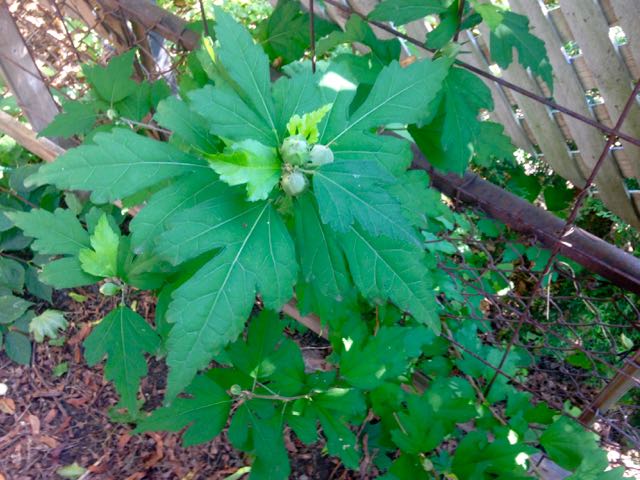
Although its white flowers are pretty, I’ll be uprooting the seedling that decided to take up residence in a more-neglected back area of my garden. This grew enough in one season to produce flowers – and seeds and, if untended, children and grandchildren. Beware.
If you’re still not discouraged from growing Hibiscus syriacus, here’s a PDF info sheet from Ohio State University which, in USDA Z5/6, is a similar climate to Toronto. Just keep an eye on the potential population explosion, and don’t plant it where it might escape into the wild.
(*As a footnote, a few years ago, a fence was constructed in front of the hedge we opened our post with, thwarting any horticulturally curious passersby.)

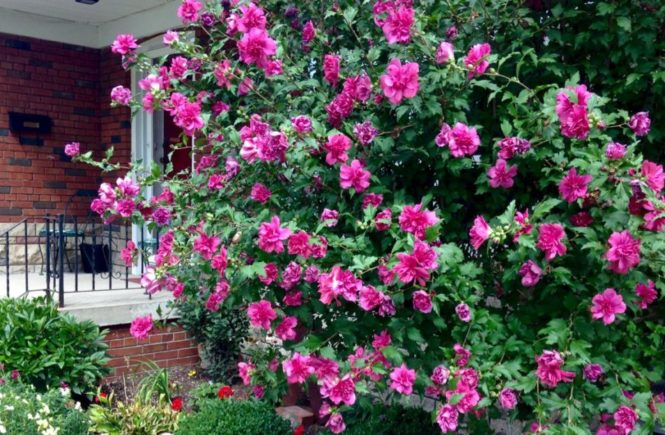

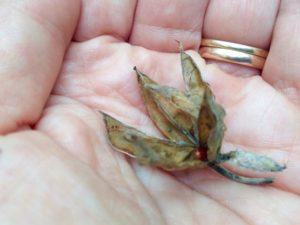
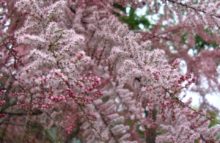

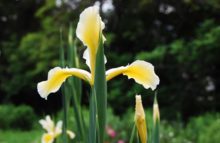
4 comments
I used to love walking past that house and was most upset when they put up the fence!
I still remember the pleasure of walking by, too, Katherine. In my callow youth, I think I was even one of those annoying passersby.
We have 5 Rose of Sharon shrubs in our big back yard. Monday idea what kind because they were clippings given to my dad by a former coworker. He just plucked them haphazardly into the ground along the back fence and they are thriving in full sun. I like them but they are competing with the grapevines my dad also planted along the fence. I came a pic of u like but you’ll have to tell me where to post it. I’m not too savvy at doing that! LOL
Hi, Traci-Anna, If your Rose of Sharon shrubs are starting to overwhelm the grapevines, perhaps they need to be pruned. This video from the Michigan State University Extension program gives you a pretty good overview of how to tackle that: https://www.youtube.com/watch?v=yl_QE_UBCpI.
A couple of things they don’t make as clear as they might: A) Prune in early spring. This tree or shrub flowers on new growth/new wood, so you aren’t cutting off flower buds if you prune before spring growth begins. And by waiting till spring, rather than pruning in fall, you aren’t opening up the shrub to winter damage on the newly cut branches. B) Whenever you make a pruning cut, no matter what kind of woody plant you’re pruning, avoid leaving a stub or stump on the cut branch. You want to cut back as closely as possible to the main branch or stem without damaging the bark.